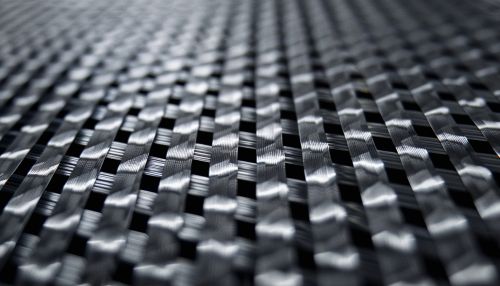Fiber Reinforcement
Introduction
Fiber Reinforcement refers to the process of incorporating fibers into a matrix material to enhance its mechanical properties. This technique is widely used in composite materials to improve their strength, stiffness, and durability. Fiber reinforcement is a critical aspect in various industries, including aerospace, automotive, construction, and sports equipment manufacturing.
Types of Fibers
Fibers used for reinforcement can be classified into several categories based on their material composition and properties. The primary types include:
Glass Fibers
Glass fibers are the most commonly used reinforcement fibers due to their high strength-to-weight ratio, good chemical resistance, and relatively low cost. They are typically used in fiberglass composites, which are prevalent in the construction and automotive industries.
Carbon Fibers
Carbon fibers are known for their exceptional strength and stiffness, as well as their low weight. These fibers are often used in high-performance applications such as aerospace and sports equipment. Carbon fibers are produced through the pyrolysis of polyacrylonitrile (PAN) or pitch.
Aramid Fibers
Aramid fibers, such as Kevlar, are renowned for their high tensile strength and thermal stability. These fibers are commonly used in bulletproof vests, aerospace components, and automotive parts. Aramid fibers are synthesized from aromatic polyamides.
Natural Fibers
Natural fibers, including jute, hemp, flax, and sisal, are gaining popularity due to their environmental benefits and cost-effectiveness. These fibers are used in various applications, including automotive interiors and construction materials.


Fiber-Matrix Interaction
The effectiveness of fiber reinforcement depends on the interaction between the fibers and the matrix material. The matrix, which can be a polymer, metal, or ceramic, binds the fibers together and transfers loads between them. Key factors influencing fiber-matrix interaction include:
Fiber Orientation
The orientation of fibers within the matrix significantly impacts the mechanical properties of the composite. Unidirectional fiber orientation provides maximum strength in one direction, while multidirectional orientation offers balanced properties in multiple directions.
Fiber Volume Fraction
The fiber volume fraction, or the proportion of fibers within the composite, affects the overall performance of the material. Higher fiber volume fractions generally lead to increased strength and stiffness, but may also result in reduced toughness.
Fiber-Matrix Bonding
The quality of the bond between the fibers and the matrix is crucial for load transfer and overall composite performance. Surface treatments and coupling agents are often used to enhance fiber-matrix adhesion.
Manufacturing Processes
Several manufacturing processes are employed to create fiber-reinforced composites, each with its advantages and limitations. Common methods include:
Hand Lay-Up
Hand lay-up is a simple and cost-effective method where fibers are manually placed in a mold and impregnated with resin. This process is suitable for low-volume production and large, complex shapes.
Filament Winding
Filament winding involves winding continuous fibers around a rotating mandrel while simultaneously applying resin. This technique is ideal for producing cylindrical or spherical components, such as pressure vessels and pipes.
Pultrusion
Pultrusion is a continuous manufacturing process where fibers are pulled through a resin bath and then through a heated die to form a constant cross-sectional shape. This method is used to produce profiles such as beams, channels, and tubes.
Resin Transfer Molding (RTM)
In RTM, dry fibers are placed in a closed mold, and resin is injected under pressure. This process allows for precise control over fiber placement and resin content, making it suitable for high-performance applications.
Applications
Fiber reinforcement is utilized across various industries to enhance the performance of materials and components. Some notable applications include:
Aerospace
In the aerospace industry, fiber-reinforced composites are used to manufacture lightweight and strong components such as aircraft wings, fuselages, and engine nacelles. These materials contribute to fuel efficiency and improved performance.
Automotive
The automotive industry employs fiber-reinforced composites to reduce vehicle weight and improve fuel efficiency. Applications include body panels, chassis components, and interior parts.
Construction
In construction, fiber-reinforced composites are used for reinforced concrete, bridge decks, and structural elements. These materials offer enhanced durability, corrosion resistance, and reduced maintenance costs.
Sports Equipment
Fiber reinforcement is widely used in sports equipment to enhance performance and durability. Examples include tennis rackets, golf clubs, bicycles, and helmets.
Advantages and Disadvantages
Fiber reinforcement offers several advantages, including:
- Increased strength and stiffness
- Improved fatigue resistance
- Enhanced corrosion resistance
- Lightweight properties
However, there are also some disadvantages to consider:
- Higher cost compared to traditional materials
- Complex manufacturing processes
- Potential for fiber breakage and matrix cracking
Future Trends
The field of fiber reinforcement is continually evolving, with ongoing research and development aimed at improving material properties and manufacturing processes. Some emerging trends include:
- Development of nano-fibers and nano-composites for enhanced performance
- Use of bio-based and recycled fibers for sustainable composites
- Advanced manufacturing techniques such as additive manufacturing and automated fiber placement
